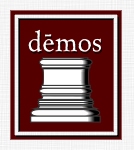S.C. Todd, selections by Michael de Brauw, edition of March 16, 2003
page 35 of 50
· graphe ·
graphe, pl. graphai · Lit. “a writing”; hence, “a written indictment,” cf. Eng. “writ.” This was the name given to the new “public” form of ordinary prosecution introduced apparently by Solon in the 590s. Its characteristic was that the indictment could be brought by any qualified citizen (ho boulomenos), whereas the older dike procedure could be brought only by the injured party. Graphai and other public procedures appear to have given rise to higher penalties, and thus to have rewarded a successful plaintiff much more heavily than did dikai; but they were also considerably more risky: a plaintiff in a public suit who failed to obtain 20 per cent of the votes of the jury could expect to suffer a heavy fine and possibly also other penalties (e.g. at least partial atimia).
Greek: γραφή, γραφαί.
[ back to top ]
page 35 of 50
